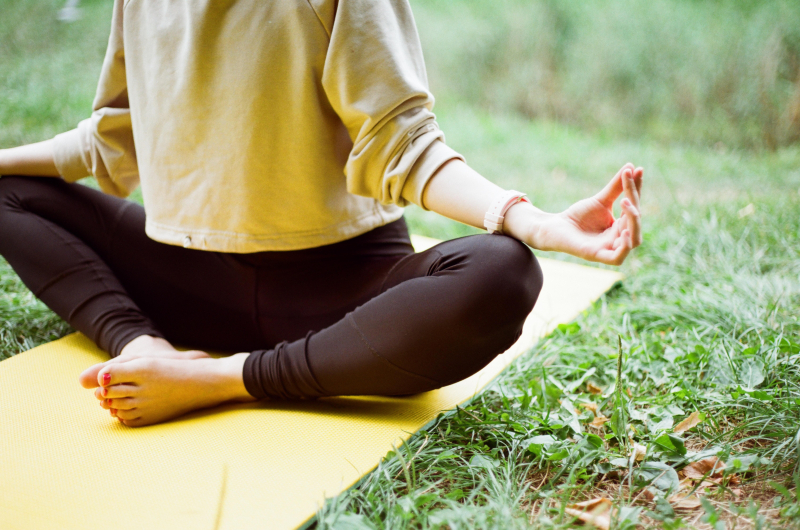Some motivation: why you should try it
-
Mental health benefits
Over the years, meditation has been explored as an alternative or complementary treatment to therapy, with rather outstanding results. You don’t need to dig very deep on Google Scholar to find recent articles demonstrating the efficiency of meditation in alleviating symptoms of PTSD, anxiety, or depression. Randomized clinical trials involving patients with various diseases also reflect on meditation’s beneficial effect on quality of life (e.g., this or this). Even if you aren’t affected by a mental disorder, it seems like a good mental health practice to try out.
-
Curiosity
If everyone is talking about it – has been, for years – then there has to be something to this seemingly simple activity. What harm would there be in trying to explore it?
-
Bonus: cognitive benefits?
Another path of research, especially involving various brain-imaging methods, has been the exploration of meditation-related structural changes in the brain. To this regard, some reviews suggest that these changes affect not specific brain regions but large-scale brain networks, while others highlight changes in specific brain areas (related to awareness, emotion regulation, memory consolidation, etc.) – but call for more rigorous research to provide definitive answers. Additionally, there’s been evidence that meditation can contribute to healthy aging; however, again, with calls for further research on the matter.
To sum up, you might want to explore meditation to feel more content, become more aware of your thoughts and feelings – or see for yourself if these benefits actually work for you.

Credit: Надя Кисільова via Unsplash
How to start meditating regularly
-
Decide why you want to do this and choose your type of practice.
There are many meditation techniques you can try – and this choice can be truly overwhelming. You can try letting some of your worries decide for you: maybe you are overwhelmed by thoughts (try a focused meditation), maybe you are looking to become more compassionate (explore loving-kindness), or cope with chronic pain (a body scanning meditation might help). If one technique doesn’t work, you can always move on to another.
-
Explore different apps for guided meditations.
As you would typically start your meditation journey with guided meditations, it may be helpful to explore different sources until you find the ones that work for you. Here are some popular choices: apps – Headspace, Calm, Meditopia, Waking Up; YouTube channels – Great Meditation, Boho Beautiful, Calm.
-
Work out a routine.
As with any habit, it helps to decide on the small details about your meditation practice in advance: where do you meditate? Do you sit on a cushion, a chair, or a yoga mat? Do you wear your workout clothes? Do you use your headphones? All of these decisions will help you know exactly what you are going to do and save time and the mental effort it takes to get started every day.
-
A tip picked up from Atomic Habits: layer it with another habit you have.
For me, it was my morning yoga session, but it can also be brushing your teeth, making your bed, walking your dog, etc. This will easily introduce meditation into your day so you don’t end up always trying to squeeze in those 5-10 minutes of calm and quiet.
-
Find a meditation buddy.
Apart from holding you accountable and creating a supportive environment, this can help you truly get into your experience by discussing your practice. Alternatively, you could also spend a few minutes after each session figuring out things like: what worked and what didn’t, whether your mood changed, and what you felt and are feeling at the moment.
-
Try to introduce elements of meditation throughout the day.
Meditation shouldn’t be limited to just your formal practice. It can happen with a few aware breaths here and there, a quick body scan if you are feeling anxious, or clear awareness of how you are feeling as you transition between tasks throughout the day. This article even describes a mindful eating exercise which may be insightful to try out.
-
Don’t give in to the inner critic.
Remember that you are not looking for profound truths in every session or striving to keep your mind clear of thoughts. As meditation guides often point out, this is about doing less, not more. Every session will be different – sometimes, you will be captured by thoughts again and again and at other times, you will be struck by how easy it is to simply notice them. In fact, being with your experience and accepting it for what it is can also be a part of your practice. So be curious, patient, and kind to yourself. If your goal is to make meditation a part of your life, then your success is in simply showing up.
For more mental health content, check out this tag on ITMO.NEWS.




